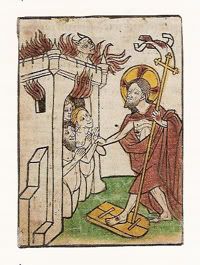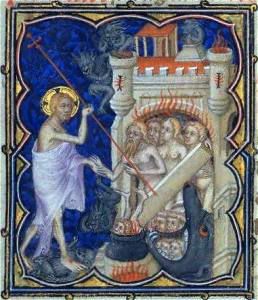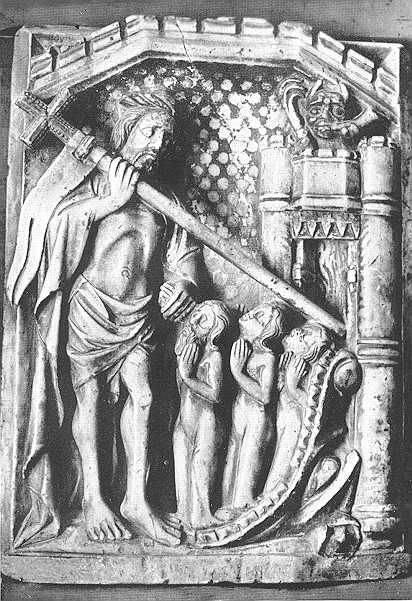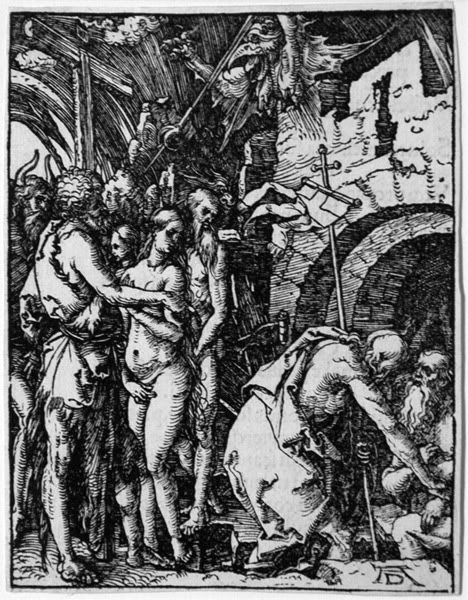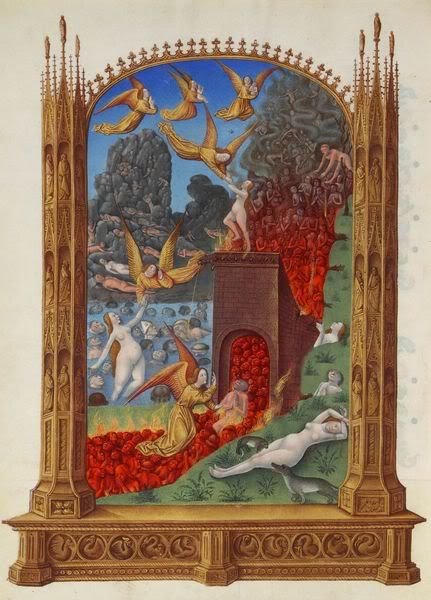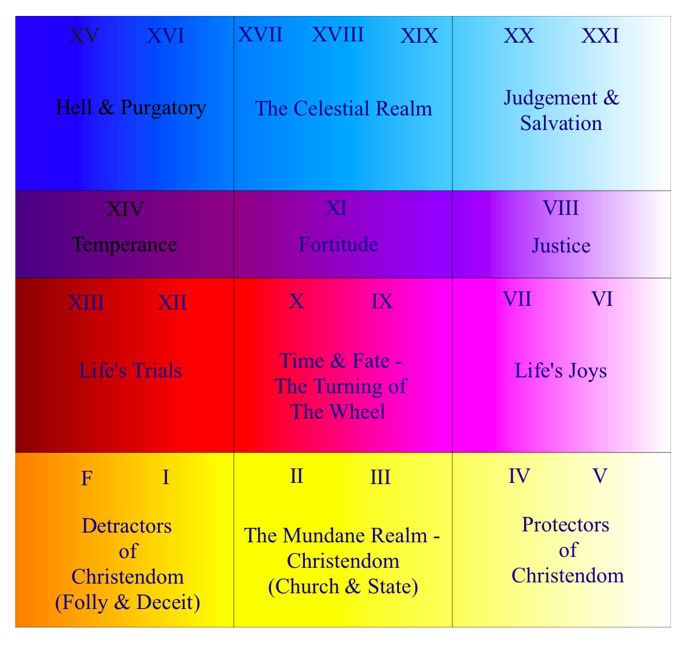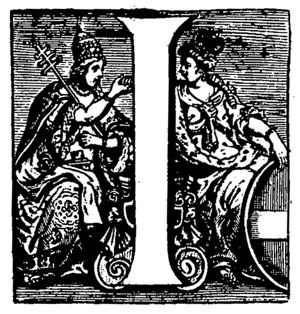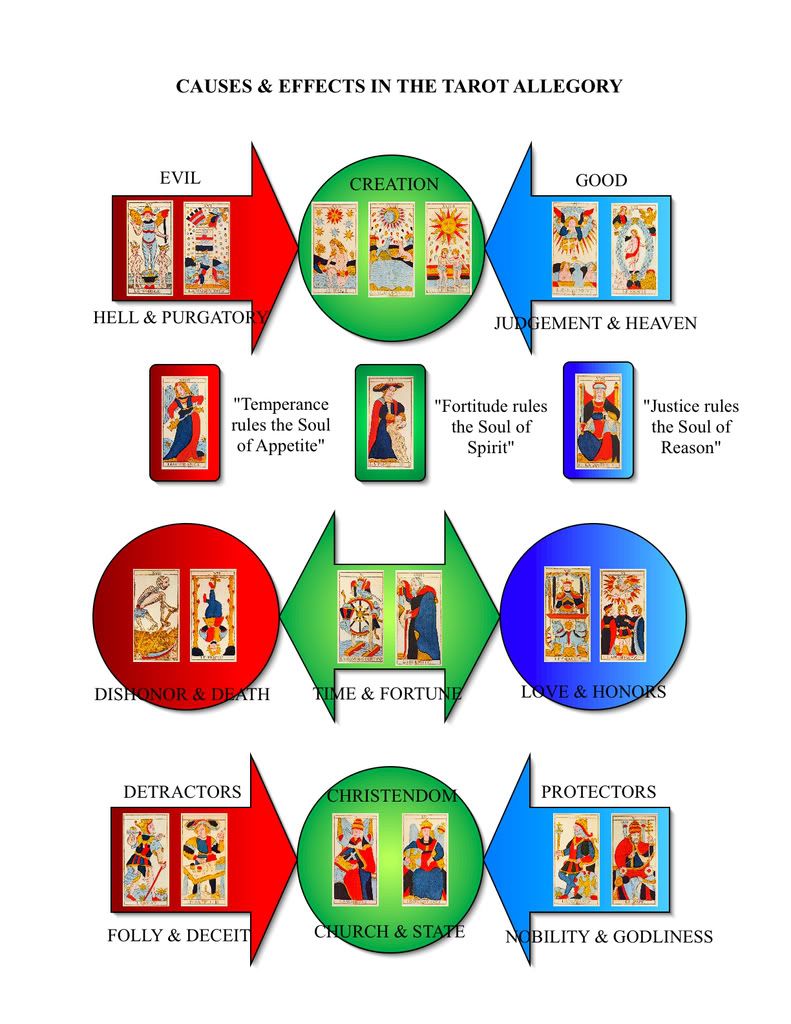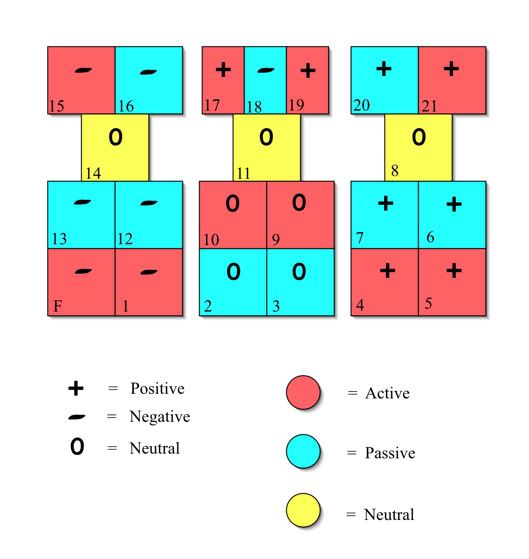Melanchollic said:
Obviously the card game of 'trionfi' (tarot) was inspired by the trionfi parades, which evolved out of the medieval dramas. I speculate that the first trionfi deck was made to commemorate one particularly grand trionfi parade sequence.
Following is the description of the highest trump Jove in the text of Martiano da Tortona, which accompanied the production of a playing card deck, which might be interpreted as old "Trionfi" deck, perhaps even it commemorated a Trionfi parade, which took place in June 1425 in Milan and perhaps it was even the oldest Trionfi deck.
compare
http://trionfi.com/0/b
http://trionfi.com/0/b/11/
"JOVE
Jove, who was the King of Athens while antiquity was still rough and wild. For the race of man, there was yet no justice, and man followed savage rites; Jupiter established the first laws. And he instituted matrimony, and banished the abominable feasts on human flesh, and forbade them by strict rigour. He induced the first society and friendship, and taught to men what is most necessary.
He commanded the first temples and altars to the immortal gods to be built, and to venerate them with the highest dignity. And the men asked the gods anything of the good that they desired. And if he deemed it worthy he would himself fulfil what they had prayed for. The inventor of wars, he overcame the Giants, mockers of the gods, and afflicted them with onerous punishment. Therefore on account of his outstanding virtue, the former age venerated him, and he was esteemed by the people as a god. And he was called Good Jove, and temples were dedicated to him, to the perpetual memory of his glory. Thus holding the divine honour, his name was received by posterity in the highest veneration. He is seated on a starry throne, with regal emblems.
Four stars appearing above, attend him, while by the right part a
splendour of right reason [= SUN ?] of the conduct of humanity, in which customs he instructed ingnorant men, the first leaders of the state. At the left that
light by which he published the inviolable laws [= MOON ?] and he decreed the society which would be cherished by humankind, being guarded by equality. On the lower right side appears a
burning star like Mars [= STAR ?], which he lets loose frightfully if scorned, but especially so that the republic may be preserved. How the illustrious example of Jupiter shines for men! Who for the sake of sacred worship happily defeated the blaspheming Giants by war. To the left, a
thunderbolt, which at one time he often used to protect his sacred laws [= Tower or lightning ?] against so many lustful and violent men."
In the last passage of the Jupiter card, which is inside the Michelino deck the highest trump and card Nr. 16 (or 15 ?) as the Tower in later Tarot, four lights appear in each corner, possibly presenting objects, which appear in the later Tarot as cards Nr. 16-17-18-19 (or resp. 15-16-17-18) and are best represented as "four lights" (not three lights, as you presented above in your contribution).
In the row, which also appears as Marseille Tarot the 4 lights are mirrored by the 4 persons
0 Fool mirrored by 21 World
1 Magician mirrored by 20 Judgment
(4 Persons mirrored by 4 lights)
2 Popess mirrored by 19 Sun
3 Empress mirrored by 18 Moon
4 Emperor mirrored by 17 Star
5 Pope mirrored by 16 Lightning
Compare
http://trionfi.com/0/g/61/
The Jupiter with 4 lights in the corners might indeed have painted similar to the later world card with its 4 evangelists.
Well, the first Trionfi deck is not naturally the first Tarot deck, if one interprets Tarot as a deck form, which possessed 22 special cards.
